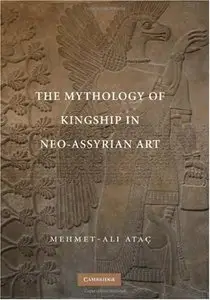The Mythology of Kingship in Neo-Assyrian Art by Mehmet-Ali Ataç
English | Feb 8, 2010 | ISBN: 0521517907, 1107627605 | 300 Pages | PDF | 15,7 MB
English | Feb 8, 2010 | ISBN: 0521517907, 1107627605 | 300 Pages | PDF | 15,7 MB
The relief slabs that decorated the palaces of the Neo-Assyrian Empire, which emphasized military conquest and royal prowess, have traditionally been understood as statements of imperial propaganda that glorified the Assyrian king. In this book, Mehmet-Ali Ataç argues that the reliefs hold a deeper meaning that was addressed primarily to an internal audience composed of court scholars and master craftsmen. Ataç focuses on representations of animals, depictions of the king as priest and warrior, and figures of mythological beings that evoke an archaic cosmos. He demonstrates that these images mask a complex philosophical rhetoric developed by court scholars in collaboration with master craftsmen who were responsible for their design and execution. Ataç argues that the layers of meaning embedded in the Neo-Assyrian palace reliefs go deeper than politics, imperial propaganda, and straightforward historical record.
Reviews:
"There is much in this book that ancient and art historians will find of interest. The method of analyzing Assyrian art in the light of the wide body of textual sources and comparative mythology is most welcome." –Bryn Mawr Classical Review
"All interested in the adaptation of primordial myth to illustrate a later art will find many thought-provoking observations in this book." –American Journal of Archaeology
"The field of ancient Near Eastern studies has traditionally been characterized by the philological virtue of attending closely to the text. Ataç's book demonstrates how this virtue is as relevant to the reading of visual material as it is to the study of verbal records." –Journal of the American Oriental Society



